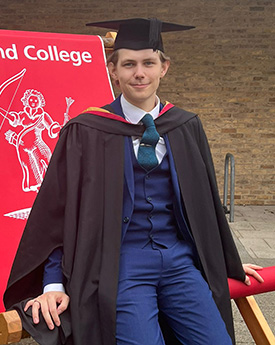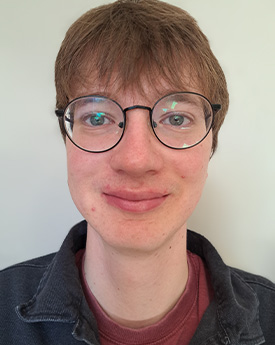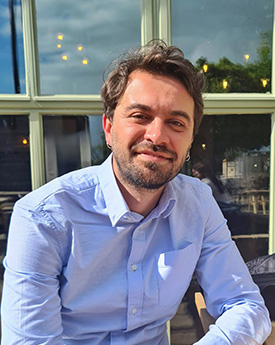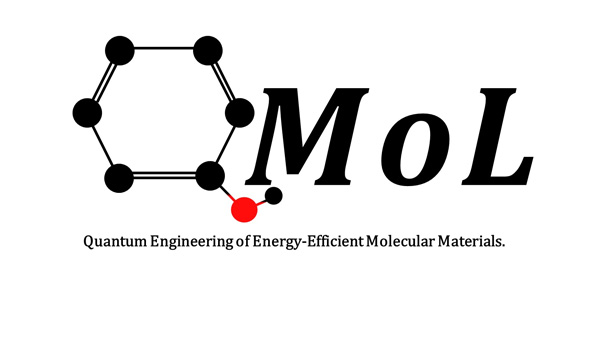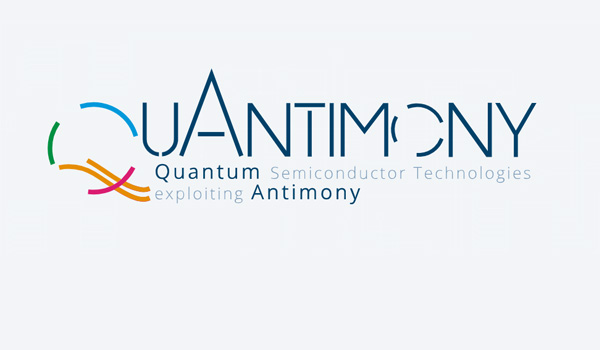
About us
We are a collaborative community of researchers interested in the development, study and exploitation of quantum phenomena, nanostructured materials and nanoscale devices.
accordion
We study quantum devices through low-temperature electronic transport measurements. Our goal is control at the level of single charge, single flux quantum, single photon and single phonon, enabled by fundamental physical phenomena such as superconductivity, the Josephson effect, flux and charge quantisation, and quantum entanglement.
The ability to control and measure quantum states in nanoscale solid-state devices makes them a promising platform for new quantum technologies. Applications include quantum computing and quantum simulation, quantum encryption, quantum metrology, and novel sensors operating beyond the standard quantum limit.
Work within this activity includes:
- Quantum Metrology
Superconducting and hybrid charge pumps for accurate definitions of the ampere. - Graphene & 2D Materials
Transport phenomena in 2D materials, including hydrodynamic flow and the superconducting proximity effect. - Ultralow temperature thermometry and devices
Developing the techniques required to undertake quantum transport measurements at electron temperatures below one millikelvin. - Semiconductors
Transport properties of narrow band-gap semiconductor heterostructures and nanostructures. - Nanoelectromechanics
Using nanoscale cantilevers to probe properties of quantum fluids.
Team
- Professor Yuri Pashkin
- Professor Rich Haley
- Professor Manus Hayne
- Dr Sergey Kafanov
- Dr Leonid Ponomarenko
- Dr Jon Prance
- Dr Viktor Tsepelin
Research involves the design, fabrication and characterisation of novel quantum devices that exploit the properties of III-V compound semiconductor nanostructures such as quantum dots, nanowires, quantum wells and superlattices.
A key aspect of our research is the use of advanced epitaxial growth, including:
- narrow band-gap semiconductors, such as GaSb, InAs and InSb
- self-assembled and site-controlled nanostructures
- droplet epitaxy
- hydrogenation of semiconductors
- dilute nitrides
- mismatched materials with atomically abrupt interfaces on GaAs and silicon substrates
We are developing a variety of photonic and electronic devices, including:
- mid-infrared LEDs and lasers for environmental gas sensing
- solar cells and thermo-photovoltaic devices for renewable energy generation
- GaSb quantum ring lasers for telecommunications
- low-noise photodetectors for focal plane arrays and thermal imaging
- low-voltage non-volatile memories
Our research is frequently carried out in collaboration with industry partners, including IQE, CST, Amethyst, SELEX, Huawei and others, as well as many academic groups worldwide.
Team
- Professor Tony Krier
- Professor Manus Hayne
- Professor Robert Young
- Dr Andrew Marshall
- Dr Qian Zhuang
We explore physical phenomena in advanced materials at the micron, nano and atomic scale. Our activities include:
- the development of functional 'smart' surfaces realised via novel molecular self-assembly methods
- nanoscale device characterisation
- atomic resolution imaging
- instrument development and biomaterial analysis
We develop new materials with targeted chemical, electrical, thermal and catalytic properties such as self-assembled molecular networks and novel 2D material - organic film heterostructures fabricated using a wide range of atomically precise molecular assembly techniques and spanning environments from highly controlled ultra-high vacuum conditions to liquid-phase molecular self-assembly and Langmuir-Blodgett deposition.
Underpinning this research are a wide range of characterisation methods and a long-standing interest in new instrument development. Scanning probe microscopy (SPM) is unparalleled in its ability to provide spatial resolution at the atomic and nanoscale. Our suite of SPM instruments is dedicated to high-resolution imaging, nanomechanical mapping, electrical measurement and scanning thermal microscopy, which we combine with optical spectroscopy, high-speed interferometry, x-ray photoelectron spectroscopy, synchrotron radiation studies and electronic structure calculation providing access to the full spectrum of materials properties.
Team
- Professor Oleg Kolosov
- Dr Sam Jarvis
- Professor Benjamin Robinson
Our research straddles three main disciplines: material science, quantum optics and information security. Through the hybridisation of these fields, we are driving a unique research activity; investigating the application of light-matter interfaces in low-dimensional structures for physical security applications.
We divide our research into the following themes:
- Developing components for optical quantum information processing (QIP) using low-dimensional semiconductor structures. The scalability and low-cost of semiconductor systems make them ideal for producing scalable quantum technologies.
- Harnessing the unique properties of nanostructures embedded in devices for identity provision and authentication. At the atomic level, no two objects are identical. We're developing technologies that produce east-to-read signatures based on this uniqueness, for security applications.
- Quantum light emission from heterostructures of two-dimensional materials, and associated applications. Solid-state lighting and two-dimensional materials were both the subject of recent Nobel prizes in physics. The combination of the two is driving an exciting research field.
Team
- Professor Robert Young
- Professor Manus Hayne
- Professor Benjamin Robinson
-
Group Members
Loading People
Current PhD Opportunities
Quantum Nanotechnology PhDs accordion accordion
Supervisor
Dr Qiandong Zhuang
Description
This project aims to establish new research in a new type of lasers – PCSEL to enable fully functional integrated circuits.
Realisation of efficient laser integrated with electronic circuit is the major development direction of photonic integrated circuit (PIC). It will enable fully functional PIC which has many important applications such as optical communication, LiDAR, on-chip sensors, imaging system, nonlinear optical switching etc. However, room-temperature high-performance lasers on Si are inferior. We will seek the feasibility of one promising technology, PCSEL, towards high-performance laser sources on silicon platform or other photonic platform such as Si3N4, barium titanate, and thin film lithium niobate. PCSEL is featured on its, surface emitting, unique beam properties such as low divergence and pure polarisation, and availability of 100s Watt high output power. These advantages leverage the actual applications, for example, enabling fully functional high-density PICs and machining, high performance LiDAR system[i].
In this project, you will gain experience and expertise in molecular beam epitaxy, semiconductor materials characterization, and nanofabrication for advanced devices, together with theoretical simulation on a variety of new semiconductor photonic devices.
[i] High-brightness scalable continuous-wave single-mode photonic-crystal laser, Masahiro Yoshida et al, Nature volume 618, pages727–732 (2023)
Supervisor
Professor Manus Hayne
Project
Huge resources, both nationally and internationally, are being deployed for the development of quantum computing. While there are several different quantum computing platforms, one of the leading ones is based on superconducting qubits, because solid state solutions are more scalable. However, superconducting qubits require an awkward combination of mK temperatures and several RF signals per qubit to operate them. As the qubit count goes up, increasing numbers of carefully engineered RF lines are need to link room temperature to mK, which takes up space, is inefficient, expensive and a substantial heat leak. A far better solution is cryo-electronics, ultimately a cryo-, conventional, computer, as close to the quantum computer as possible, to interface with it and run it. With careful design and specifications conventional Si-based electronics can operate at several K, but will inevitably give out at lower temperatures. Semiconductors rely on doping to make even the most basic devices, and because dopants have ionisation energies of 10’s of meV, they don’t work well, or even at all, at low temperatures: the charge carriers ‘freeze out’.
We are working on a novel approach to digital electronics [1], using compound semiconductors AlSb, GaSb and InAs, called the 6.1-Å family because of their very comparable lattice constants. Despite this structural similarity, they have very different band gaps and conduction and valence band offsets, which can be exploited to make devices with unique properties. To date, much of this work has focused on the development of ULTRARAM™ memory [2] and field-effect inverter (FEI) logic [3] at room temperature. However, as a direct consequence of the remarkable properties of the 6.1-Å semiconductors, our devices are made without doping. Instead, they rely on band offsets to provide charge carriers, making them capable of operating down to absolute zero.
This PhD will be dedicated to the design, fabrication and testing of ULTRARAM™ and FEI-logic individual devices and simple integrated circuits for use at low temperatures. It will involve fine-tuning of device and array design to optimise low-temperature operation, fabrication in the QTC cleanrooms in Physics and room temperature and low temperature testing (in collaboration with Dr Michael Thompson and/or Professor Jon Prance).
This PhD is offered in collaboration with Quinas Technology, a multi-international-award-winning spinout from Physics at Lancaster University. Funding for UK students is available on a competitive basis for online applications received before the end of January 2026.
[1] Granted patents US10243086B2, US10938178B2, EP3266080B1, JP6833704B2 & KR102231085 and pending patents CN2020800465163, EP4544585A1, JP2025520830A, KR20250034372A, CN119522643A & GB2501376.4.
[2] P. D. Hodgson et al., ‘ULTRARAM: A Low-Energy, High-Endurance, Compound-Semiconductor Memory on Silicon’, Adv. Electron. Mater. 8, 2101103 (2022).
[3] J. J. Hall, ‘The Field Effect Inverter: Concept, Design, Simulation, Fabrication, and Testing of a Unipolar Digital Logic Device’, PhD Thesis, Lancaster University 2025.
Supervisor
Dr Qiandong Zhuang
Description
This project aims to establish new research in wavelength-extended avalanche photodiode (APD) capable for single-photo detection and transferable for heterogenous integration for photonic integrated circuits targeting biochemical sensors.
The big advance of single-photon counting is the ability to faithfully capture the single quantum of light. This technique has attracted increasing attention globally owing to the critical capability for a wide range of important applications ranging from new low-light sensing to emerging photonic quantum technologies. Its potential has been proved by several demonstrations since 2020, for instance, quantum secured internet communication over 22 Km has been established[1], long-distance single-photon imaging over 200 km has been demonstrated with high sensitivity and temporal resolution[2]; and prototype of single-photon LiDAR imaging for greenhouse gas methane mapping has been demonstrated[3]. However, the detection limit of 1650nm from well-developed Si and InGaAs ADPs restricts the deployment of potential of single photon counting. For example, biochemical sensing applications require photons at longer wavelength, e.g. mid infrared (Mid-IR), e.g. 2 – 5 um. We propose to utilize advanced type II superlattice to extend the ADP responding wavelength into MIR spectral range. Unique device design and processing will be also developed to enable transferable individual devices for heterogenous integration.
The student will gain experience and expertise in molecular beam epitaxy, semiconductor materials characterization and device fabrication in cleanroom, and photodetector assessment.
[1] Entanglement of two quantum memories via fibers over dozens of km, Yong Yu et al, Nature 578, 240 (2020)
[2] Single-photon imaging over 200 km, Zheng-ping Li et al, Optica 8, 344 (2021)
[3] Single-photon LiDAR gas imagers for continuous monitoring of industrial methane emissions, Murray K. Reed et al, Proceedings 11579, Quantum Photonics: Enabling Technologies; 115790C (2020)
Supervisor
Professor Manus Hayne
Project description
Optical fibres are the backbone of the global communications infrastructure that underpins the data transmission society depends on, but optical fibres have preferred wavelength ranges, the telecoms O and C bands, at ~1310 and ~1550 nm, respectively. This requirement severely limits the choice of compound semiconductors that can be used, i.e., those with suitable band gaps, so conventional telecoms emitters (lasers) are based on InP and close alloy variants. At shorter wavelengths, e.g., ~850 nm used for short distance communication (datacoms), where optical-fibre absorption losses are higher, GaAs-based devices are preferred. A small amount of In added to GaAs to form InGaAs allows emission to wavelengths as long as 1000 nm, but GaAs-based devices have significant benefits. GaAs wafers are larger, more robust and cheaper that InP, which is commercially beneficial. There is also an important technical advantage. GaAs and AlAs have almost identical lattice constants but a significant refractive index contrast, which means that they can be used in alternating layers to build distributed Bragg reflectors (DBRs) based on interference effects. Pairs of DBRs are used to form the optical cavity that is the basis of cheap and efficient vertical-cavity surface-emitting lasers (VCSELs), which are ubiquitous in datacoms, and also used in a range of other applications such as laser printers, computer mice, bar code readers and smart device facial recognition. The key issue is that extending the advantages of GaAs-based devices to telecoms wavelengths has long proven very challenging.
We are developing a new family GaAs-based photon sources that operate at telecoms wavelength, based on emission from GaSb quantum rings (QRs) in GaAs. QR emission at room temperature is naturally in the (shorter end of the) telecoms band at room temperature, but it is an unusual choice because GaSb in GaAs is a so-called type-II system, meaning that electrons and holes are physically separated in the GaAs and GaSb respectively, with poor wave function overlap and intrinsically weak radiative recombination: they don’t shine brightly. However, we have shown that embedding the QRs in an optical cavity formed by a pair of DBRs strongly enhances the radiative recombination at the resonant wavelength of the cavity, allowing the development of telecoms wavelength QR VCSELs [1] and single-photon LEDS (SPLEDs), the latter of which is intended for use in quantum key distribution (QKD).
This PhD will be dedicated to the further development of the design, fabrication and testing of QR SPLEDs and VCSELs. It will involve improving output efficiency and purity (SPLEDs) and extending the emission wavelength from ~1310 nm to ~1550 nm. Much of the research will be performed in-house at Lancaster, but some aspects of device fabrication and testing may be undertaken in collaboration with partner institutions.
This PhD is offered in collaboration with Photarix, a new, high-profile spinout from Physics at Lancaster University. Funding for UK students is available on a competitive basis for online applications received before the end of January 2026.
[1] Granted patents US10938178B2, EP3266080B1, JP6833704B2 & KR102231085.
[2] G. Acar et al., ‘Towards GaSb/GaAs quantum-ring single-photon LEDs: recent progress and prospects’, SPIE OPTO, 2024, San Francisco, California, US, Proc SPIE 12906, Light-Emitting Devices, Materials, and Applications XXVIII; 1290609 (2024).
Supervisor
Dr Andrew Marshall
Description
Applications are invited for a research PhD in the Physics Department and Quantum Technology Centre at Lancaster University, UK. The project will focus on the study and development of novel type II superlattice (T2SL) infrared photodetectors aligned with the technology interests of Leonardo UK. This is part of a successful and long-standing collaboration, which has already produced focal plane chips with
good imaging performance in the midwave infrared (see images).
The successful applicant will build on the group’s existing expertise in the growth, fabrication and characterisation of InAs/InAsSb T2SLs. They will gain state of the art experience in the growth of III-V quantum structures by molecular beam epitaxy and the cleanroom fabrication of commercially relevant photodetectors and focal plane arrays. Through iterative modelling, growth, fabrication and characterisation, they will build detailed understanding in the design and optimisation of T2SLs for LWIR imaging.
This PhD project will be supported Leonardo UK a major UK technology company and globally leading producer of infrared sensors and cameras. Senior engineers at Leonardo will provide supervisory input and an application focus for the project. Leonardo’s involvement will provide a pathway to application of the project’s findings, making the student’s work highly relevant to future technologies. The experience of working closely with an industrial partner will also give the successful applicant excellent professional development and enhance their career prospects.
The PhD candidate will join Dr Marshall’s thriving research group with fellow students and researchers sharing their knowledge in related fields. The Lancaster Physics department has a world leading research profile and longstanding record of ranking highly in UK research assessments.
Enquiries should be directed to Dr Andrew Marshall a.r.marshall@lancaster.ac.uk .
Supervisor
Dr Samuel Jarvis
Description
Project summary
This experimental PhD project aims to create a new generation of quantum-engineered materials for ultra-efficient, atomic scale switches that perform low-power, in-memory computation. These devices harness quantum interference – the wave nature of electrons – to control current at the atomic level. By assembling nanoscale “building blocks” one atom at a time, we can design and test materials whose electronic behaviour can be tuned with quantum precision.
Background
Modern AI hardware wastes most of its energy simply moving data rather than processing it, a limitation known as the von Neumann bottleneck. Data transfer can account for up to 90 % of a computer’s energy use, equivalent to hundreds of terawatt-hours each year worldwide. Memristors (“memory resistors”) offer a radical solution by merging memory and logic in the same nanoscale element, potentially cutting energy per operation by hundreds to thousands of times. Unlike conventional memory, they retain information without power and can perform in-memory and neuromorphic computation that mimics the brain. By building memristors atom-by-atom, this project seeks to harness quantum effects to create switches that learn, remember, and compute with almost no wasted energy, paving the way for sustainable, low-carbon AI.
To realise these next-generation materials, our memristors will be built from porphyrin-based molecules – the same class of compounds that make plants green and blood red. Porphyrins are remarkable: their electronic and optical properties can be engineered by design, offering tuneable conductivity, light absorption and emission, and controllable quantum interference. These properties are determined by the quantum mechanical electronic structure of the molecules, which can be understood in a similar way to semiconductor physics and related quantum technologies. This project is focussed on experimental physics, and, whilst advantageous, requires no prior knowledge from chemistry or materials science.
Project outline
This project will experimentally realise and test molecular-scale memristors built from porphyrin-based molecules engineered to exploit quantum interference and redox properties. Using advanced deposition techniques, you will assemble highly ordered molecular layers onto surfaces to form atomic-scale devices in which memory and logic coexist within a single element. Their nanoscale structure and switching behaviour will be characterised using atomic force microscopy (AFM) and scanning tunnelling microscopy (STM) under ultra-low-noise conditions in the state-of-the-art IsoLab facility, enabling direct observation of switching events at the level of individual atoms and molecules. Electrical measurements will then measure how molecular design influences performance, such as switching speed, stability, and on/off ratio, to uncover the quantum mechanisms that control resistive memory at the atomic scale. By establishing these design principles, the project aims to demonstrate a new class of low-power, molecular memristors that could form the foundation for future in-memory and neuromorphic computing technologies.
Interested candidates should contact Dr Samuel Jarvis for further information.
Supervisor
Dr Samuel Jarvis
Description
Project summary – The goal of this PhD project is to develop highly ordered and structurally stable molecular devices. The growth of thermally and mechanically stable molecular nanostructures is a major challenge for retaining the quantum mechanical properties of molecules in real-world and demanding environments. This is especially important in nanoelectrical devices where heat and stress can damage the molecular structure, causing device failure. This PhD project aims to overcome this challenge by developing new methods for step-by-step (atom-by-atom) on-surface synthesis of covalently stabilised molecular wires and devices. Achieving this goal will address a major outstanding challenge in translating functional molecular polymers to technologically relevant materials.
Background – Thin-film molecular layers are exceptionally important for introducing high degrees of functionality to materials. Molecules can be designed with a multitude of different physical properties, ranging from high electrical conductivity, catalytic activity, tuneable optical properties, and much more [1]. These properties are determined by the electronic structure of a molecule, making them well suited for applications in quantum technologies. In particular, on-surface polymerization restricted to one and two dimensions has received considerable recent attention [2]. Not only does covalent cross-linking of molecules greatly increase their stability, on-surface polymerization also enables the growth of unique molecular structures often otherwise impossible to synthesize, including graphene nano ribbons used as molecular wires [3].
At present, the vast majority of molecular nanoscale synthesis is limited to catalytically active metal substrates, where the catalyst metal is required to activate the polymerisation reaction. This results in strong surface coupling causing molecular distortion, orbital broadening, and electrical short-circuits, thus detrimentally affecting molecular properties and severely restricting their application in physical devices. In order to fully realise nanoscale molecular devices, we must instead fabricate molecular wires directly on semiconducting substrates such as SiO2, where they can be directly integrated into nanoelectronic devices. To do this, we will build on recent findings [4] highlighting the potential to fabricate nanoscale molecular structures directly on surfaces.
Project Outline – This project will explore methods to direct the assembly and growth of functional molecules into nanoscale structures and devices. We will study how single molecules with well-defined quantum mechanical properties can be ‘linked’ together into rigid 1D molecular wires or 2D molecular networks, starting with porphyrin and graphene nanoribbon based wires. Single molecule and atomic scale properties will be studied with images of their detailed atomic and electronic structure (with resolution better than 0.1nm). The resulting molecular structures will provide an exciting playground to develop our fundamental understanding of quantum behaviour and molecular interactions at the atomic scale, and ultimately, provide new routes for developing nanoscale electronic devices such as field effect transistors (FETs) [5].
The selected student will have the opportunity to become trained in a broad range of techniques to study a variety of nanoscale materials. This will involve advanced scanning probe microscopy methods capable of imaging single atoms and characterising nanoscale electronic and chemical properties. This work will take place in world-leading facilities including Lancaster’s Quantum Technology Centre and the award winning George Pickett IsoLab, providing some of the most advanced environments for characterisation in the world. You will work in a vibrant research group, whose research has been shortlisted for the Times Higher Education award for ‘STEM project of the year’ in 2019. You will also become highly trained in nanoscale material fabrication, ultra-high vacuum technology, X-ray spectroscopy, clean room usage, device testing, and use nano-fabrication tools to prepare devices for integration with embedded systems. Students are also expected to publish high impact journal publications and present their work at international meetings and conferences, and will receive opportunities and training for personal and research development.
Interested candidates should contact Dr Samuel Jarvis for further information.
[1] T. Kudernac, S. Lei, J. A. A. W. Elemans, and S. De Feyter, Chem. Soc. Rev. 38, 402 (2009).
[2] L. Grill and S. Hecht, Nature Chemistry, 12, 115 (2020).
[3] P. Ruffieux, S. Wang, B. Yang, C. Sánchez-Sánchez, J. Liu, T. Dienel, et al., Nature 531, 489 (2016).
[4] L. Forcieri, Q. Wu, A. Quadrelli, S. Hou, B. Mangham, N.R. Champness, D. Buceta, M.A. Lopez-Quintela, C.J. Lambert, S.P. Jarvis, Nature Chemistry (under review), (2022).
[5] J.P. Llinas, A. Fairbrother, G.B. Barin, W. Shi,. K. Lee, S. Wu, et al., Nature Communications, 8, 633 (2017).
Supervisor
Professor Benjamin Robinson (Physics)
Project summary: This is an experimental project, based in the Department of Physics at Lancaster University. You will study the electrical switching properties of thin films of organometallic materials assembled on compatible electrode surfaces and in devices capped by 2D films of graphene to help realise a new generation of memristive switching devices with the potential to fulfil societal needs for next generation AI.
Background:
The advance of artificial intelligence (AI) represents the largest market opportunity in the history of humankind, estimated to be anywhere between USD 3.5 and 5.8 trillion. However, it also represents a grave environmental challenge. As a typical example, hundreds of millions of daily queries on ChatGPT can cost around 1 GWh each day, equivalent to the daily energy consumption for about 33,000 UK households. This trend is unsustainable, and new approaches are needed now.
The fundamental limitation of modern computing is the rate of data transfer between a processing unit and memory, known as the von Neumann bottleneck. This data transfer not only limits computational speed but is also highly energy intensive. To overcome this bottleneck there is a global demand for new technologies for brain-inspired, neuromorphic, computing within memory.
Memristors are one of the most promising technologies for achieving in-memory computation. Short for “memory resistors”, memristors are considered the fourth fundamental passive circuit element, alongside resistors, capacitors, and inductors. However, in contrast to traditional volatile memory technologies like RAM, which lose data when power is lost, memristors are a class of non-volatile memory, whose resistive state is maintained even when no external power is applied.
This project will contribute to the technological challenges of realising stable, efficient memristive elements formed of highly ordered thin films of organometallic molecules with highly tunable switching mechanisms.
The project’s goals are aligned with the recently awarded, Lancaster-led, £7.1M EPSRC programme grant, Quantum engineering of energy-efficient molecular materials (QMol)
Project Outline: This project will focus on the thin film growth of novel organic/organometallic compounds by molecular self-assembly and Langmuir-Blodgett deposition and their subsequent characterisation by a range of surface science techniques including scanning probe microscopy.
The project is predominantly experimental, and you will gain interdisciplinary expertise spanning materials design, thin film fabrication, and nanoscale characterisation. You will benefit from Lancaster’s molecular thin film fabrication capabilities and a suite of state-of-the-art scanning probe microscopes to explore the physical processes of thermal and electrical transport in deposited ultra-thin structures. The compounds will be supplied by colleagues in the Departments of Chemistry at Oxford University and Imperial College, London. There will also be opportunities for you to work with colleagues from the Department of Physics at Imperial College to translate your thin films to practical device architectures.
Research Environment: You will benefit from a vibrant working environment and will be part of the QMol consortium incorporating partners across nine leading Universities and 11 industry partners. Through QMol, you will have the opportunity to develop skills in interdisciplinary working through close collaboration with colleagues studying the theory of quantum transport and device fabrication, as well as industry partners from both SMEs and multinational corporations.
You will be trained and supported in other academic skills such as the preparation of high-impact journal publications, and presenting your work at international meetings and conferences, and you will receive opportunities and training for personal and research development. In addition, you will have the opportunity to join in local and national outreach and engagement activities.
Lancaster University is a leading UK university, and the Physics Department at Lancaster University is one of the top in the UK for research. REF2021 rated 98% of our research outputs as world-leading or internationally excellent. The Department is ranked 7th in the UK for Physics in the Guardian University League Tables 2026.
The Department is committed to family-friendly and flexible working policies. We are also strongly committed to fostering diversity within our community as a source of excellence, cultural enrichment, and social strength. We hold an Athena SWAN Silver award and Institute of Physics Juno Champion status. We welcome those who would contribute to the further diversification of our department.
The Candidate: This project will ideally suit a candidate who has an interest in interdisciplinary experimental nanoscience. Knowledge of nanomaterials or experience in either quantum transport, scanning probe microscopy and/or self-assembly of organic monolayers would be advantageous but not compulsory as full training in a wide variety of techniques will be given.
You will need to be highly motivated and be able to work as part of a team, ensuring that key milestones are reached. You will be expected to lead discussions and give regular research updates in person with the group leader and in wider research group meetings with the project consortium. The ability to plan your own workload and keep accurate scientific records is important.
General eligibility criteria: This is a highly interdisciplinary project operating at the interface of Physics, Chemistry and device engineering. Applicants would normally be expected to hold a minimum of a UK Honours degree at 2:1 level or equivalent in Physics, Chemistry, Materials Science or a related area.
Enquiries: Interested applicants are welcome to get in touch to learn more about the PhD project. Please contact Professor Benjamin Robinson, for more information.
Supervisor
Professor Benjamin Robinson
Project summary: This is an experimental project, based in the Department of Physics at Lancaster University. You will study the electrical and thermoelectric properties of thin films of molecular materials assembled on electrode surfaces to help realise a new generation of molecular devices with the potential to fulfil societal needs for flexible energy harvesting materials.
Background: Green thermoelectricity - the sustainable generation of electricity from waste heat - has the potential to be a key enabling technology in the roadmap to the UK’s target of net zero greenhouse gases by 2050 and a pillar of the efforts to build a viable circular economy by contributing to emerging UK green-industries.
Waste heat generated by information and computing technologies (ICT) is expected to reach 30% of electricity consumption by 2025 and is widely recognised as being unsustainable. If thermoelectric (TE) energy harvesters could be developed, which perform well at relatively low temperatures (<150oC), then waste heat from ICT could be converted back into useful electricity. Energy harvested from the environment and sources such as the human body could also be used to power the internet of things and wearable devices, with engineered thermal management relevant to applications in healthcare, fashion and high-performance clothing.
This project will contribute to these technological challenges and the associated societal and economic benefits by helping to realise large area, thin-film materials and devices on rigid and flexible substrates, designed for TE energy harvesting and cooling. This overarching research challenge will be met, in part, by utilising quantum interference (QI), which introduces additional dynamical range by suppressing current flow at low bias and allows fine control of electrical and thermal conductance.
The project’s goals are aligned with the recently awarded, Lancaster-led, £7.1M EPSRC programme grant, Quantum engineering of energy-efficient molecular materials (QMol)
Project Outline: This project will focus on the thin film growth of novel organic/organometallic compounds by molecular self-assembly and Langmuir-Blodgett deposition and their subsequent characterisation by a range of surface science techniques including scanning probe microscopy.
The project is predominantly experimental, and you will gain interdisciplinary expertise spanning materials design, thin film fabrication, and nanoscale characterisation. You will benefit from Lancaster’s molecular thin film fabrication capabilities and a suite of state-of-the-art scanning probe microscopes to explore the physical processes of thermal and electrical transport in deposited ultra-thin structures. The compounds will be supplied by colleagues in the Departments of Chemistry at Oxford University and Imperial College, London. There will also be opportunities for you to work with colleagues from the Department of Physics at Imperial College to translate your thin films to practical device architectures.
Research Environment: You will benefit from a vibrant working environment and will be part of the QMol consortium incorporating partners across nine leading Universities and 11 industry partners. Through QMol, you will have the opportunity to develop skills in interdisciplinary working through close collaboration with colleagues studying the theory of quantum transport and device fabrication, as well as industry partners from both SMEs and multinational corporations.
You will be trained and supported in other academic skills such as the preparation of high-impact journal publications, and presenting your work at international meetings and conferences, and you will receive opportunities and training for personal and research development. In addition, you will have the opportunity to join in local and national outreach and engagement activities.
Lancaster University is a leading UK university, and the Physics Department at Lancaster University is one of the top in the UK for research. REF2021 rated 98% of our research outputs as world-leading or internationally excellent. The Department is ranked 7th in the UK for Physics in the Guardian University League Tables 2026.
The Department is committed to family-friendly and flexible working policies. We are also strongly committed to fostering diversity within our community as a source of excellence, cultural enrichment, and social strength. We hold an Athena SWAN Silver award and Institute of Physics Juno Champion status. We welcome those who would contribute to the further diversification of our department.
The Candidate: This project will ideally suit a candidate who has an interest in interdisciplinary experimental nanoscience. Knowledge of nanomaterials or experience in either quantum transport, scanning probe microscopy and/or self-assembly of organic monolayers would be advantageous but not compulsory as full training in a wide variety of techniques will be given. You will need to be highly motivated and be able to work as part of a team, ensuring that key milestones are reached. You will be expected to lead discussions and give regular research updates in person with the group leader and in wider research group meetings with the project consortium. The ability to plan your own workload and keep accurate scientific records is important.
General eligibility criteria: This is a highly interdisciplinary project operating at the interface of Physics, Chemistry and device engineering. Applicants would normally be expected to hold a minimum of a UK Honours degree at 2:1 level or equivalent in Physics, Chemistry, Materials Science or a related area.
Enquiries: Interested applicants are welcome to get in touch to learn more about the PhD project. Please contact Professor Benjamin Robinson, for more information
Supervisor
Professor Jonathan Prance
Project description
The ability to cool materials to millikelvin temperatures has been the foundation of many breakthroughs in condensed matter physics. At this frontier, quantum behaviour can be studied by making devices smaller and colder, increasing coherence across the system. The goal of this project is to apply a new technique – on-chip demagnetisation refrigeration – to reach temperatures below 1 millikelvin in electronic devices and materials. This will open a new temperature range for the development of quantum technologies.
In the sub-millikelvin regime, it becomes increasingly difficult to measure and define the temperature of a material or device. The thermal coupling between various sub-systems can be extremely small; for example, the electrons in the metal wires contacting a chip can be at a different temperature to the electrons in the chip, the phonons in the chip, and the apparatus that you are using to cool it. This situation calls for a variety of thermometry techniques, each suited to measuring the temperature of a different physical system. The thermometers must also have extremely low heat dissipation and excellent isolation from the room temperature environment. This project will also include the development of new and existing thermometry techniques that are suitable for sub-millikelvin temperatures.
Devices will be produced in the Lancaster Quantum Technology Centre cleanroom, and by our collaborators. Experiments will be conducted using the cutting-edge facilities of the Ultralow Temperature Physics group and IsoLab at Lancaster University.
Candidates would benefit from an interest in and knowledge of some of these areas:
- electrical measurements of quantum devices, e.g. semiconductor quantum dots, superconducting qubits, 2D-material-based devices,
- cryogenic techniques,
- nanofabrication,
- data acquisition and measurement automation.
Related publications:
Ridgard et al., Journal of Applied Physics 137, 245901 (2025)
Autti et al., Physical Review Letters 131, 077001 (2023)
Samani et al., Physical Review Research 4, 033225 (2022)
Chawner et al., Physical Review Applied 15, 034044 (2021)
Jones et al., Journal of Low Temperature Physics 201, p772 (2020)
Funding is available on a competitive basis. To be considered for a funded studentship, please submit your application by 31 January 2026.
You can apply directly stating the title of the project and the name of the supervisor.
Supervisor
Professsor Edward Laird
Description
Atomic clocks are the most precise scientific instruments ever made, and are key to advanced technologies for navigation, communication, and radar. The most accurate atomic clocks cost millions of pounds and take up entire rooms, but some of the fastest development is at the other extreme: miniature atomic clocks for portable electronics. The need for these clocks has never been greater: a temporary loss of the time standard distributed by GPS, which could happen following a solar storm or deliberate jamming, is estimated as over a billion pounds per day.
We are developing a new type of clock that could fit on a chip. Present-day atomic clocks are based on atomic vapours confined in a vacuum chamber. Our new approach is to use electron and nuclear spins in endohedral fullerene molecules – nature’s atom traps – whose energy levels offer an exquisitely stable frequency reference. To make this novel approach work, we must overcome a range of physics and engineering challenges, including detecting spin resonance from a small number of spins, understanding the physics that determines the strength and sharpness of the signal, and miniaturizing the control electronics. The reward will be a completely new technology with a wide range of civilian and military uses.
We are looking for a candidate who has a strong interest in applying quantum physics in new technology and is motivated to develop the new and demanding electronic measurement techniques that will be necessary. Our project is in close collaboration with a local technology company, Teleplan Forsberg. You learn important and marketable skills in quantum electronics, radio-frequency engineering, and miniaturisation.
Further information:
“Spin resonance clock transition of the endohedral fullerene 15N@C60”
Supervisor
Professor Oleg Kolosov
Description
Scanning probe microscopes (SPMs) are uniquely capable of mapping local nanoscale physical properties (electronic, electrical, thermal, mechanical, thermoelectric etc) of materials, at a single point. At a same time, existing SPM’s cannot map the propagation of local physical excitations – such as electrons, phonons, electromagnetic waves, magnons, polaritons etc – the phenomena that underscore the physical basis for performance of current and future advanced materials and devices.
The project will bridge the fundamental and applied physics exploring a novel approach for measurements of propagation of these excitations on nanoscale – Transport Scanning Probe Microscope (TSPM) enabling mapping a surface and thin films transport phenomena along the distances ranging from 50 nm to 50 um, with near-atomic lateral resolution. TSPM will be used to directly map on nanoscale for the first time three key interlinked physical phenomena that underline modern technology
1) nanoscale transport of charge carriers – electrons, holes, excitons in novel 2D materials transistors and neuromorphic memory elements,
2) heat flow of phonons, polaritons and “hot” electrons – addressing the “heat” bottleneck for current microelectronic processors, and
3) propagation of electromagnetical excitations – plasmons and magnons for microwaves to light and quantum excitations.
The successful applicant will work in experimental research at Lancaster University Quantum Technology Centre (LQTC) in collaboration with National Graphene Institute (NGI) and National Physics Laboratory (NPL) in the unique UK and internationally leading research environment across the field of scanning probe microscopy, nanoscale transport phenomena (electromagnetic and thermal), and low temperature physics. The applicant is expected to have an excellent academic record in Physics, Material Science or Electrical Engineering, with good experience in advanced experimentation, and good analytical skills. The project is expected to result both in high-profile publications as well as IP with the novel instrumentation and provide an excellent carrier start to the PhD student working on it.
You can apply directly stating the title of the project and the name of the supervisor. Please contact Professor Oleg Kolosov for any additional enquiries
References:
- Mech RK, et al. Thermal transport mapping in twisted double bilayer graphene. Applied Physics Letters 127, (2025).
- Leenders RA, Afanasiev D, Kimel AV, Mikhaylovskiy RV. Canted spin order as a platform for ultrafast conversion of magnons. Nature 630, 335-339 (2024).
Supervisors
Dr Michael Thompson, Professor Jonathan Prance, Professor Yuri Pashkin
Project description
Superconducting circuits based on Josephson junctions (JJs) are the cornerstone of quantum and classical cryogenic electronics and are an active topic of technological development. Conventional junctions rely on electric current or magnetic-flux control, however Junctions formed with graphene can have their critical current tuned using a local gate, which can be more practical and can provide new functionality.
The SuperICQ consortium is a collaboration between Lancaster University, Chalmers (Sweden), Aalto (Finland) and VTT (Finland), and is focussed on developing graphene-based JJs on a 200 mm wafer platform for truly scalable superconducting JJ integrated circuits. We will be developing quantum-limited parametric amplifiers, on-chip filters, ultra-sensitive microwave bolometers, voltage-tuneable resonators, and multiplexed control and readout modules for scalable interfacing of superconducting qubits. The project’s goal is to demonstrate a novel path toward ultra-low-power electronics for scalable control, readout, and interfacing of superconducting quantum computers and advance toward future quantum systems-on-a-chip.
As a student working within this project, you will make use of Lancaster’s cleanroom for fabrication and the IsoLab facility for device characterisation. IsoLab is equipped with a dilution refrigerator capable of cooling devices down to 10 mK, configured with a complete qubit characterisation suite, and is housed inside an electromagnetically shielded room. The filtered mains circuits and dedicated ground nest make this facility the ideal location for testing low-noise cryogenic electronics.
For further information please contact: Dr Michael Thompson Professor Jonathan Prance Professor Yuri Pashkin





















